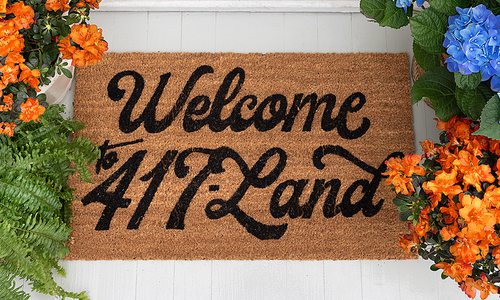If there’s anything 417-land has right now it’s inertia. Local leaders with bright minds, a lifetime of experience and love for southwest Missouri are propelling us forward into a future that capitalizes on the things that make us stand out: historic city streets in the midst of exciting revitalization, natural resources that everybody wants to visit, top-notch educational opportunities, and a sense of identity and community that is only growing. Great minds think alike. A few recurring themes popped up as our sources imagined 417-land’s future (reimagine our public transportation, anyone?). What does all this future planning mean for the years to come?
Life
The Future of 417-land
We asked 20 local leaders to imagine 417-land’s future. Trolleys, daylighting Jordan Creek, investing in the plaza beneath the Jefferson Avenue Footbridge and more were dreamt up.
By Ettie Berneking, Sony Hocklander, Rose Marthis, Savannah Waszczuk and Vivian Wheeler
Jan 2018
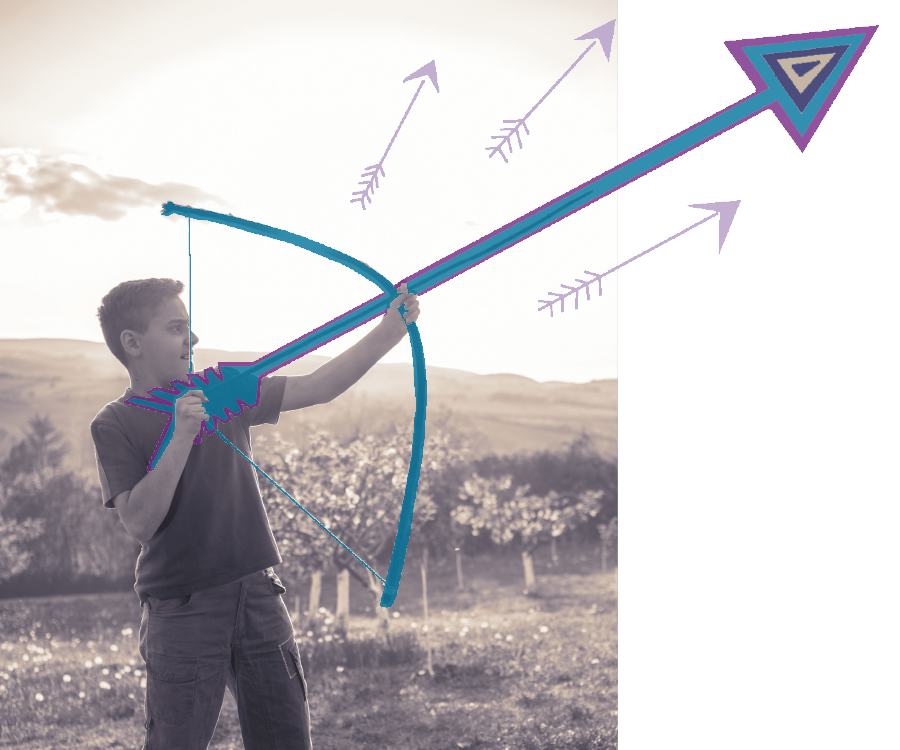
BIG IDEA #1: REBRAND OUR REGION
Like father like daughter: Jim and Rachel Anderson share a passion for economic development. They believe today’s efforts will pay off even more in tomorrow’s community.
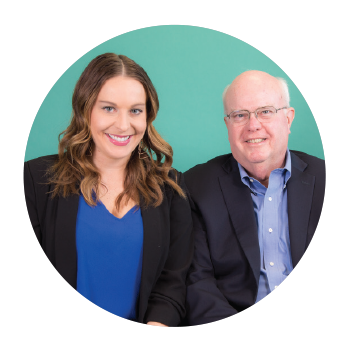 For decades, Jim Anderson has championed a better community as president of the Springfield Area Chamber of Commerce and even now in his current role with CoxHealth. His daughter, Rachel Anderson, is a go-to eFactory resource for startups. She’s also a champion for women in business as co-founder of Rosie, a leadership advocacy group.
For decades, Jim Anderson has championed a better community as president of the Springfield Area Chamber of Commerce and even now in his current role with CoxHealth. His daughter, Rachel Anderson, is a go-to eFactory resource for startups. She’s also a champion for women in business as co-founder of Rosie, a leadership advocacy group.
Team Anderson’s future 417-land would be renowned as the place to live for access to biking, hiking, running, fishing, hunting, watersports and more. In this scenario, our reputation for the outdoors—coupled with cultural arts, dining, health care and other city amenities—has attracted a talented workforce. And that has attracted more business, growing our economy.
That future won’t happen without developing a unified identity. And rebranding the outdoors seems a natural fit, particularly with Johnny Morris’ Wonders of Wildlife National Museum and Aquarium. “Looking down the road, Wonders of Wildlife is certainly going to be a destination for people from all over the world, and it’s symbolic of what we have here,” Jim says.
Quality of life is more important than ever when it comes to attracting a workforce, Rachel says. People today expect it, “so we need to be competitive.” It’s a lesson gleaned from role-model cities Des Moines and Boise, where economic leaders committed to rebranding the arts and outdoors, respectively. In Springfield, “We don’t have one unifying brand, unfortunately,” Jim says. But we could if people are willing to take a risk.
Rebranding isn’t the duo’s only vision. For Rachel, our future includes more funding for entrepreneurs. Springfield has a reputation for small business development. But we need more investors stepping up to help startups grow into viable companies. “We need to increase our financial literacy both on the startup side but also on the investor side in different ways,” she says. She also envisions more respect for the value of creative arts—which research shows contribute to our economy.
Jim’s future includes more funding for mental health crises. If you look behind the opioid crisis and domestic and child abuse, he says, “It’s the root cause for so many issues we are dealing with in our community.” Despite our resources, he says, “the demand just so far exceeds the supply.”
The pair also envisions new community stories. Instead of touting cheap labor, we promote competitive wages and salaries. In addition to friendliness, we’re known for diversity and inclusiveness. Our leadership includes women and young professionals.
And in 417-land we’re known for our assets not our crime stats. Changes for these and more are in progress. “Those small things over the next 20 years will make a big impact,” Jim says.—By Sony Hocklander
BIG IDEA #2: START YOUNG
Progressive ideas rooted in community connections are key to Springfield’s success. One such future-proof program might give young residents a better start.
 In many ways, 417-land’s future is held in the tiniest hands. If we can help babies start with a healthy happy life, says Katie Towns, assistant director of health for Springfield–Greene County Health Department, “we are going to help them be more successful as they start school; they will be more successful when they start their career.” And that’s a healthy outcome for the community’s future. The Nest Partnership, a pilot health program for expectant moms and babies, could help those hands reach for the stars one day. A multisource Health Department program, the first Nest opened in west Springfield, an area identified for its gap in services, Towns says. Working with Jordan Valley Community Health Center, the program offers primary health care, registered nurse case management, prenatal and infant care education, the WIC program and other resources.
In many ways, 417-land’s future is held in the tiniest hands. If we can help babies start with a healthy happy life, says Katie Towns, assistant director of health for Springfield–Greene County Health Department, “we are going to help them be more successful as they start school; they will be more successful when they start their career.” And that’s a healthy outcome for the community’s future. The Nest Partnership, a pilot health program for expectant moms and babies, could help those hands reach for the stars one day. A multisource Health Department program, the first Nest opened in west Springfield, an area identified for its gap in services, Towns says. Working with Jordan Valley Community Health Center, the program offers primary health care, registered nurse case management, prenatal and infant care education, the WIC program and other resources.
Good health is just a piece of Springfield’s successful big picture, Towns says, but it’s an important piece. Nest is an innovative way to connect people with resources. Replicating the program at other locations could help more babies get a better start in life. The hope is for every mom to have easy access to reliable care and support.—By Sony Hocklander

BIG IDEA #3: CREATE LOCAL HYPE
John McQueary is proud of his hometown, and he thinks it’s about time the rest of Springfield fell in love with the Queen City.
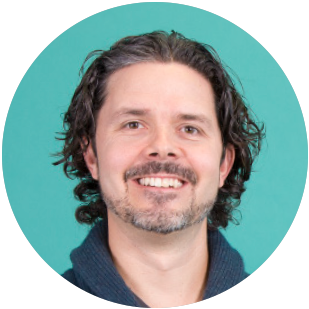 There’s a reason Homer Simpson lives in Springfield. It’s generic and one of the most common town names in the country. That, according to John McQueary, is the problem. “We need to define ourselves and identify how we see our own city and develop a sense of pride and a call to action,” he says. In an effort to do just that, McQueary opened Hotel Vandivort with his wife, Karen, and his brother, Billy, cementing downtown as a destination. Then last May, McQueary and other downtown business owners formed the Springfield Identity Project—the mindmeld behind the city’s unofficial flag, “Every time someone does something unique and of worth, whether it’s the flag or someone opening a business or a silly thing like Hurts Donuts, that’s something authentically Springfield,” he says. “The city isn’t going to be able to convince residents to care about Springfield. It comes from locals doing unique things and encouraging others that it’s okay to take a chance. To convince bigger cities of our uniqueness, we need to convince the people who live here first.”—By Ettie Berneking
There’s a reason Homer Simpson lives in Springfield. It’s generic and one of the most common town names in the country. That, according to John McQueary, is the problem. “We need to define ourselves and identify how we see our own city and develop a sense of pride and a call to action,” he says. In an effort to do just that, McQueary opened Hotel Vandivort with his wife, Karen, and his brother, Billy, cementing downtown as a destination. Then last May, McQueary and other downtown business owners formed the Springfield Identity Project—the mindmeld behind the city’s unofficial flag, “Every time someone does something unique and of worth, whether it’s the flag or someone opening a business or a silly thing like Hurts Donuts, that’s something authentically Springfield,” he says. “The city isn’t going to be able to convince residents to care about Springfield. It comes from locals doing unique things and encouraging others that it’s okay to take a chance. To convince bigger cities of our uniqueness, we need to convince the people who live here first.”—By Ettie Berneking

BIG IDEA #4: CONNECT OUR TWO HEARTS
Springfield’s resident history buff shares a bit of our city’s past and how he thinks it can be given a new life in the future.
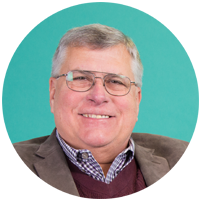 When John Sellars is asked to predict Springfield’s future, he starts by explaining the city’s past. “Springfield has always had a history that was very cyclic,” says Sellars, who is the Executive Director of the History Museum on the Square. “Peaks and valleys, peaks and valleys, peaks and valleys through time.” As he talks about the past, he describes two areas: Springfield and north Springfield. “They were two separate communities for almost 20 years, and then they merged together,” he says. “But there were still two hearts. There was the square and the business area around it, which was one heart pumping, and then Commercial Street was another heart pumping.”
When John Sellars is asked to predict Springfield’s future, he starts by explaining the city’s past. “Springfield has always had a history that was very cyclic,” says Sellars, who is the Executive Director of the History Museum on the Square. “Peaks and valleys, peaks and valleys, peaks and valleys through time.” As he talks about the past, he describes two areas: Springfield and north Springfield. “They were two separate communities for almost 20 years, and then they merged together,” he says. “But there were still two hearts. There was the square and the business area around it, which was one heart pumping, and then Commercial Street was another heart pumping.”
Later came the 1970s, though, and things changed drastically. “With the opening of the Battlefield Mall, it ripped out those hearts,” Sellars says. “It moved all of that energy and activity so far south that it was beyond comprehension. It left a terrible void in the downtown area that was exacerbated by inattention.” This continued for years, but Sellars says we’re in an uptick. “We are just now seeing, in both Commercial Street and the square, a restoration of some of that energy—some of that heart,” he says.
As a Springfield native and someone who has volunteered for the history museum for 41 years, Sellars is thrilled about the revival. “If I could envision the future, I would love to see Boonville Avenue from the square to Commercial Street be as it was in the 1870s and ’80s,” Sellars says. He dreams of a unification between the two areas. “Think of a thoroughfare with a trolley car running from the square to Commercial Street and back,” Sellars says. “Then you have another set of trolley lines running from West Meadows to the ballpark and crossing here just north of the square. People could go and see these historic sites firsthand and never get off the trolley. I just think it would be the neatest thing in the world, to unify the square and Commercial Street in a way that really cements them. It would bring people by old city hall and bring people by the Carnegie Branch Library and by the courthouse and by the justice center, and just all of those things in between. I think we could really make that corridor something extra special.”—By Savannah Waszczuk
BIG IDEA #5: PLAN FOR PEDESTRIANS
In the time between her roles as a teacher, an advocate, a business owner and an Ozarks native, Amy Blansit has thought of how our area can bring people together.
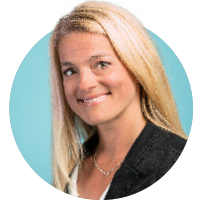 Let’s talk attractions. We don’t have an Arch; Hammons Tower is a few feet shy of competing with the Space Needle. It’s time our corner of the state creates its claim to fame—that one thing people drive hours to see. So what’s our Bean, our Shuttlecock, our Pearl Street, our Epcot? Amy Blansit has a few ideas.
Let’s talk attractions. We don’t have an Arch; Hammons Tower is a few feet shy of competing with the Space Needle. It’s time our corner of the state creates its claim to fame—that one thing people drive hours to see. So what’s our Bean, our Shuttlecock, our Pearl Street, our Epcot? Amy Blansit has a few ideas.
After navigating the waters of higher education, community development and life as a parent and new business owner, this 417-land native has a few thoughts about how to improve life in Springfield, and it doesn’t include skyscrapers or oversized coffee beans. Her idea? “A really cool, walkable downtown with a trolley link that takes you to C-Street,” she says. Instead of building a thing, Blansit wants to build a place. “We need an open-air setting that brings people together,” she says. “It’s about attracting young individuals who want to stay here and who want more to do more than head to a bar downtown.” It’s about bringing in culture.
“Kansas City is a great example of a city that resurrected the trolley system to get people out of their cars and into areas that are being revitalized,” she says. Just imagine it: downtown’s shops, restaurants and bars bustling with pedestrians and cyclists. Searching for that elusive parking spot—gone. Navigating mazes of one-way streets—gone. Waiting for selfie-obsessed pedestrians to exit the crosswalk—gone. In Blansit’s dream, downtown Springfield would be a pedestrian haven where cars are left at the perimeter, leaving visitors, residents, business owners and shoppers to meander throughout downtown at ease.
It’s not just wishful thinking that has Blansit daydreaming about rezoning downtown. It’s the slow death of urban sprawl. “That’s the great shift we’re starting to see in millennials,” she says. “Urban sprawl is no longer the thing, but they also don’t want to see thousands of people stacked in high-rises.” The solution, as Blansit sees it, is walkable, multiuse neighborhoods in which corner markets reign once more and small cafes and restaurants brim with locals who live down the street. “Every neighborhood needs a school that’s walkable and that has quality childcare and shops,” she says. “That’s what people are demanding now, and if we don’t deliver, they’re going to go somewhere else that’s providing it.”—By Ettie Berneking
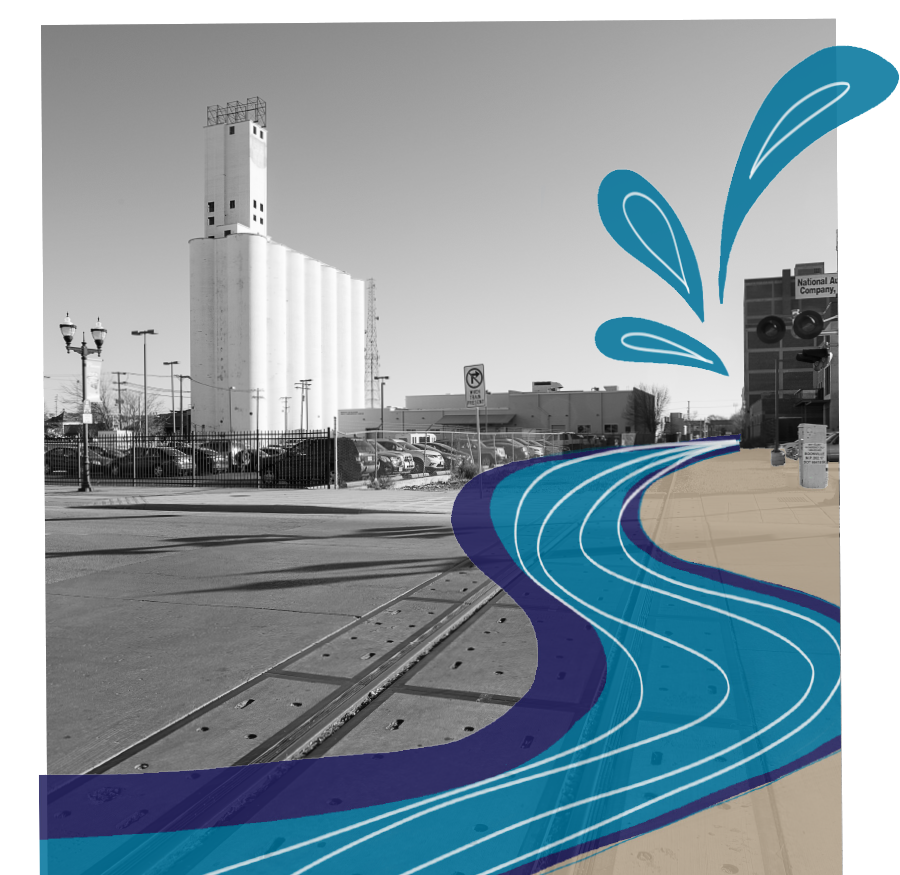
BIG IDEA #6: DAYLIGHT JORDAN VALLEY CREEK
Teresa Coyan shares how daylighting Jordan Creek could transform downtown Springfield.
 When things get tough, it’s time to bring in the SWAT Team. The Millennial SWAT Team that is. Created by the Council of Champions, the Millennial SWAT brought together 19 individuals from diverse backgrounds to craft a vision for the future of downtown Springfield meant to appeal to the next generation of 417-landers. Between 2016 and 2017, various team members set out on research trips to five cities with vibrant downtowns. The plan was to bring back the best ideas each city offered and figure out how those ideas might be applied to downtown Springfield. The result was nine recommendations for large-scale projects, but for team members Teresa Coyan and Chris Weiss, one specific idea rose above the rest.
When things get tough, it’s time to bring in the SWAT Team. The Millennial SWAT Team that is. Created by the Council of Champions, the Millennial SWAT brought together 19 individuals from diverse backgrounds to craft a vision for the future of downtown Springfield meant to appeal to the next generation of 417-landers. Between 2016 and 2017, various team members set out on research trips to five cities with vibrant downtowns. The plan was to bring back the best ideas each city offered and figure out how those ideas might be applied to downtown Springfield. The result was nine recommendations for large-scale projects, but for team members Teresa Coyan and Chris Weiss, one specific idea rose above the rest.
Both Coyan, director of public affairs at CoxHealth, and Chris Weiss, partner at Husch Blackwell, say daylighting Jordan Creek could have the biggest impact on downtown Springfield. Jordan Creek runs underground through downtown between East Phelps Street and West Mill Street. Weiss attended the SWAT Team’s trip to Chattanooga, Tennessee and saw how a similar project transformed its downtown and spurred economic growth and residential development.;
For Weiss, daylighting Jordan Creek is a chance for Springfield to dream and think big. “We think like a small town, and I think we can be better than that,” he says. “I think you’ve got to have big bold ideas.” According to the Millennial SWAT Team report, “The project would offer flood control relief, beautify downtown, provide recreation, and serve as a catalyst for redevelopment and connectivity of surrounding areas, including those heading north toward Government plaza.” Coyan envisions trails running along the waterway that would connect to the Ozark Greenways. For Coyan, daylighting Jordan Creek would connect downtown with one of our greatest assets, our outdoors. “There is so much to embrace with our outdoors,” she says. “We need to celebrate that, expand upon what we already have and talk about it.”
Although there seems to be a lot of momentum behind the idea of daylighting Jordan Creek and a lot of enthusiasm from involved parties, the question of how to finance it has yet to be answered. However, Weiss is optimistic we can make it happen. “It’s not going to be something we can do overnight,” he says. “What we really need to focus on is building public support and support within our business community. If everybody thinks it’s a great idea, I think it can happen.”—By Vivian Wheeler
BIG IDEA #7: BRING CHILDCARE TO THE OFFICE
A smoothly functioning community incorporates childcare right into the workplace, and Morey Mechlin says it can happen right in 417-land.
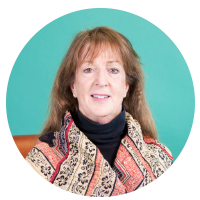 Sometimes people have a way of making things harder than they need to be. Morey Mechlin, who retired from her position as Care to Learn’s executive director in October 2015, uses this idea to lead into her support for universal childcare. “I think we’ve made it difficult—why do we make things hard?” Mechlin says, talking about childcare not only in Springfield but around the country. “It’s not even thinking outside of the box. It’s just looking at best practices around the world today. All Japanese corporations have childcare on-site. Because children are a part of life, why isn’t childcare a part of life?”
Sometimes people have a way of making things harder than they need to be. Morey Mechlin, who retired from her position as Care to Learn’s executive director in October 2015, uses this idea to lead into her support for universal childcare. “I think we’ve made it difficult—why do we make things hard?” Mechlin says, talking about childcare not only in Springfield but around the country. “It’s not even thinking outside of the box. It’s just looking at best practices around the world today. All Japanese corporations have childcare on-site. Because children are a part of life, why isn’t childcare a part of life?”
Although many mothers and fathers love the thought of having on-site childcare at their place of employment, the idea of making it a reality may seem daunting to a lot of business owners. That’s why it comes down to those business owners finding systems and solutions that would work for them. “It would look like whatever you would need it to look like,” Mechlin says. “Maybe it’s a job share type thing. Maybe there’s one room that is a childcare room, and someone is in there and paid to watch the children. Maybe the employees take turns watching them. When you’re at home, how do you manage it? How does a nonworking spouse at home manage it? They’re doing other things, too. They’re not just sitting and staring at their kid all day. We need to incorporate it. We make it abnormal; let’s make it normal.”
There are a few employers in Springfield who do this well—Mechlin says T-Mobile, Prime and Missouri State University all have great on-site childcare programs. But what about everyone else? Mechlin thinks it all needs to start by educating people on the advantages. “There are workplace advantages here,” Mechlin says. “There are emotional advantages. There are family advantages. Of course cost is a concern, but when you can show how it is offset by production, by better attendance, by all of those factors that matter, suddenly it won’t be an issue anymore. We need to provide employers education on how to do it.”—By Savannah Waszczuk
BIG IDEA #8: BECOME A FOOD HUB
Robert Noble shares how we can transform 417-land into the food publishing hub of the Midwest.
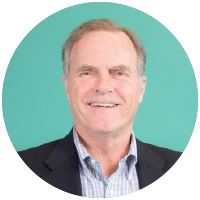 One of the unique aspects that we have [in 417-land] is the fact that we have an established food reputation here, and our community has the credentials. We have been building in such a direction that we can support claims such as being a leading food hub and publishing entity within the Ozarks region—I always think of it as the Ozarks region, not just Springfield. But we have publications and production companies here that are tremendous in so many ways. When you take these entities and these great publications in our area, and then you combine them with all the colleges and universities here—their journalism programs or the hospitality side of their educational system—we’re producing great talent. We are well positioned, and there are ways to synergize all of our energies and make a story that I think is going to be tough to beat. It’s all about working together—it’s all of these people working together. That’s one of my goals.—By Robert Noble as told to Savannah Waszczuk
One of the unique aspects that we have [in 417-land] is the fact that we have an established food reputation here, and our community has the credentials. We have been building in such a direction that we can support claims such as being a leading food hub and publishing entity within the Ozarks region—I always think of it as the Ozarks region, not just Springfield. But we have publications and production companies here that are tremendous in so many ways. When you take these entities and these great publications in our area, and then you combine them with all the colleges and universities here—their journalism programs or the hospitality side of their educational system—we’re producing great talent. We are well positioned, and there are ways to synergize all of our energies and make a story that I think is going to be tough to beat. It’s all about working together—it’s all of these people working together. That’s one of my goals.—By Robert Noble as told to Savannah Waszczuk

BIG IDEA #9: LIVE, WORK & PLAY DOWNTOWN
As a Springfield City Council member, Jan Fisk continually aids in moving Springfield forward. Fisk gives insight into the council’s strides for alcohol on city property and her own vision for a bustling new area in downtown Springfield.
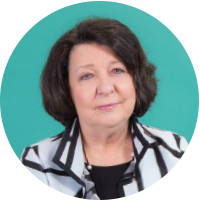 Business owners know that author Jim Collins was onto something when he discussed the bus analogy in Good to Great—you have to make sure you have the right people on the bus, and you have to get the right people in the right seats. When you compare this analogy to the election of Springfield City Council members, Springfield residents should be proud: Since being appointed in 2012 and reelected earlier this year, Jan Fisk has continually taken strides to move our city forward.
Business owners know that author Jim Collins was onto something when he discussed the bus analogy in Good to Great—you have to make sure you have the right people on the bus, and you have to get the right people in the right seats. When you compare this analogy to the election of Springfield City Council members, Springfield residents should be proud: Since being appointed in 2012 and reelected earlier this year, Jan Fisk has continually taken strides to move our city forward.
One of the council’s latest tasks involves alcohol—or the lack of it—on city properties during events. “We’ve wanted it to happen for a long time, and we’ve taken a few baby steps to see how it would work,” Fisk says. “We started at the fairgrounds and the E*Plex, because they were turning away much-needed, revenue-generating events because no alcohol was allowed.” After allowing alcohol at the fairgrounds and having no police-reported incidents, the council voted to bring alcohol to Artsfest on Walnut Street. “That was another small step and again, no problems,” Fisk says. There are also select festivals downtown that have had success with serving alcohol, which also helps support the council’s latest proposal: In early 2018, the council is reviewing a proposal to allow alcohol at certain events taking place at select Park Board venues in town.
Fisk is also passionate about her other councilwoman tasks, with the desire to attract and retain millennials at the top of the list. One of the major ways to do that, she says, is to breathe some fresh life into downtown Springfield. A lot of this works in conjunction with the development of the IDEA Commons area. “All of these startups and a lot of these companies are looking for young people, and they want to be downtown because of what the potential could be,” Fisk says. A revitalized downtown would include a plethora of development resulting in new housing, more outdoor spaces and more restaurants, among other things. As a pie-in-the-sky thought, Fisk envisions an outdoor eating area that’s housed between two old brick structures or even in the center of the square. “I went to a fabulous place in Providence that was simply a development between buildings,” Fisk says. “There were dining tables, umbrellas, outdoor music, a water fountain. It was packed with people who were sitting outside, eating and socializing. They had servers from restaurants all around coming in and delivering food. To me, that’s one of the ways we can develop the area—to make downtown an area to live, work and play.”—By Savannah Waszczuk
BIG IDEA #10: BECOME SCHOOL-CENTRIC
As you look around the country, it’s not hard to find a commonality among the most thriving cities: They’re often home to large, dynamic universities. We talked to Missouri State University President Clif Smart about how he envisions MSU in 417-land’s future.
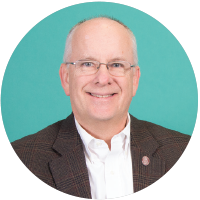 Thirty seconds into a conversation with Missouri State University President Clif Smart, and it’s obvious that he’s the right guy for the job: He’s passionate not only about education and Missouri State University, but also about the city of Springfield.
Thirty seconds into a conversation with Missouri State University President Clif Smart, and it’s obvious that he’s the right guy for the job: He’s passionate not only about education and Missouri State University, but also about the city of Springfield.
“I work on the Chamber’s visioning committee,” Smart says, referring to the Chamber-appointed committee that works to identify and prioritize key initiatives to help align the vision for Springfield’s future. “The overall theme has been that we want Springfield to be the most vibrant city in our state. I think a huge piece of that is an emphasis on education from pre-K, K-12 and higher ed.”
Smart compares Springfield to other similar cities around the country. “If you look around the country, those cities that are doing well—that are thriving, as their economies are booming again—they all have a large, dynamic university,” Smart says. “Look at Madison, Wisconsin—the piece of Wisconsin that is thriving again is centered around Madison and the University of Wisconsin.” He can see Missouri State playing a similar role in 417-land. “Having a robust, four-year university with 24,000-plus students—that’s growing—is a huge part of our identity and success,” Smart says.
As he discusses growth, Smart mentions a few highlights that have happened at Missouri State in recent years. “There’s the renovation of our campus,” Smart says. “The expansion of our academic programs. Our involvement in IDEA Commons and entrepreneurship. Essentially, that hub of activity in IDEA Commons is a university development, and it’s time to move to the second stage of that.” He talks about the transformation of the area and how it’s already making a difference. “Over 1,000 jobs have been created as a part of the IDEA Commons work,” Smart says. “We have an incubator known as The eFactory that’s 100 percent rented out, and it has become a hub of young entrepreneurship in Springfield. The next piece is to expand that.”
As Smart discusses what’s next, he talks about more expansion, with a goal of developing more facilities that drive entrepreneurship, science and computer information services. “We need to look to the fields that our economy—and almost any growing 21st century economy—needs,” Smart says. “We need new facilities and additional funds to support those crucial programs. The more engineers and computer scientists and entrepreneurs and scientists we can turn out, the better we’re going to be.”—By Savannah Waszczuk
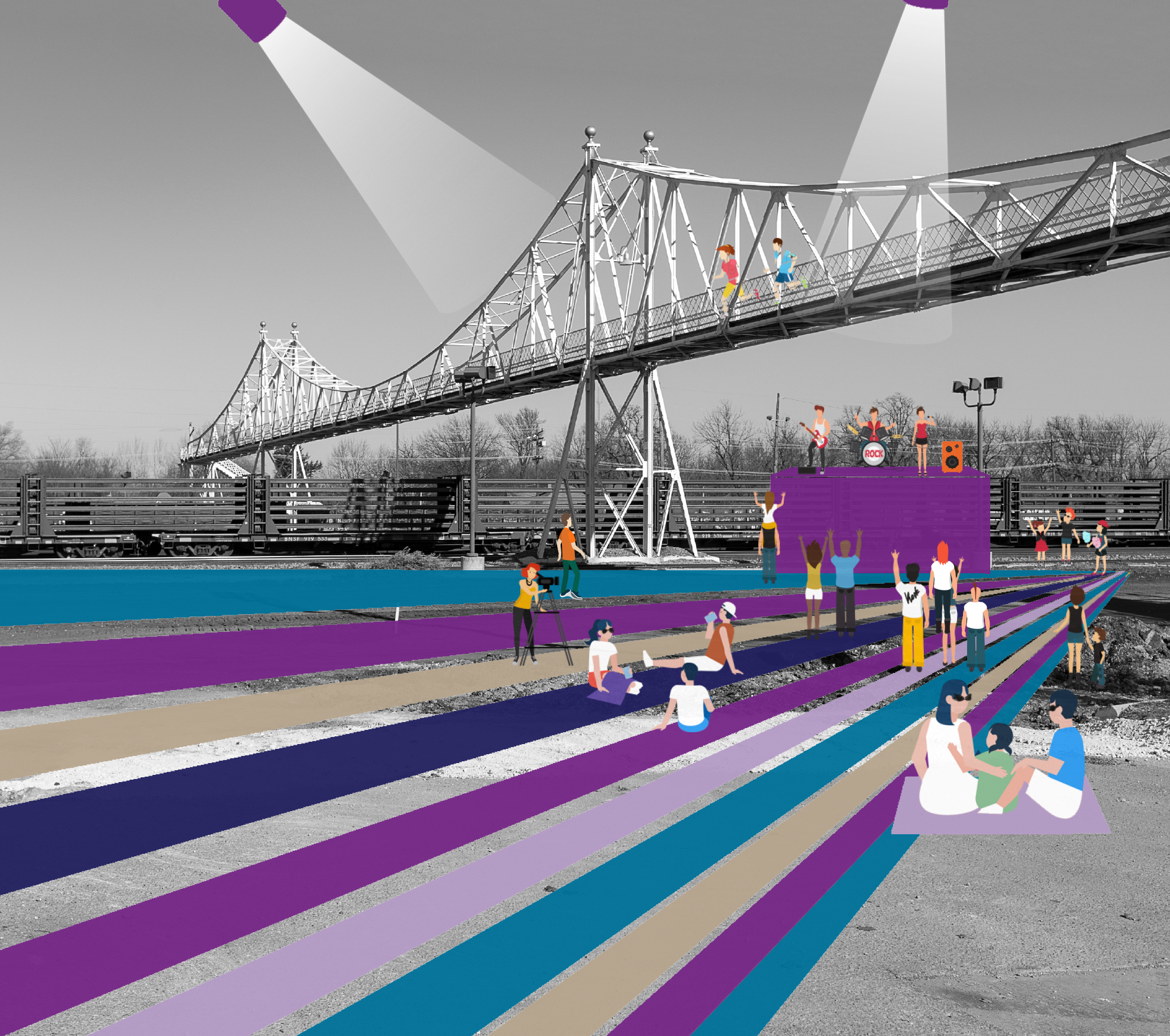
BIG IDEA #11: CONNECT ON C-STREET
Lyle and Larnelle Foster discuss what’s next for Commercial Street.
 When Lyle Foster, owner of Big Momma’s Coffee and Espresso Bar, and his son Larnelle Foster, owner of Q Enoteca wine bar, discuss the future of Commercial Street, it’s a sight to behold. This father-son duo of Commercial Street businesses are big dreamers, and when they talk, the ideas come rapidly. Often spurred by something the other said, ideas bounce between them like pingpong balls. Spanning the gamut from practical to seemingly impossible, the Fosters’ hopes and dreams for the future of Commercial Street are varied, but community and connectivity are common threads that run through them.
When Lyle Foster, owner of Big Momma’s Coffee and Espresso Bar, and his son Larnelle Foster, owner of Q Enoteca wine bar, discuss the future of Commercial Street, it’s a sight to behold. This father-son duo of Commercial Street businesses are big dreamers, and when they talk, the ideas come rapidly. Often spurred by something the other said, ideas bounce between them like pingpong balls. Spanning the gamut from practical to seemingly impossible, the Fosters’ hopes and dreams for the future of Commercial Street are varied, but community and connectivity are common threads that run through them.
When asked how they would like to improve Commercial Street, both Lyle and Larnelle rank better public transportation at the top of their list. Having lived in Chicago for many years, Larnelle thinks it’s bizarre that people are constantly jumping into their cars, and he would like it to be easier for people to get to and from Commercial Street. “The first thing that came to mind for me would be a subway,” Larnelle says. Lyle runs with that idea but suggests modifying it to a light rail, which would be easier to build in our rocky topography. He imagines it as a pod system that moves people to “various little people centers” like Commercial Street, downtown, Sunshine Street and other busy locations. On a smaller scale, Larnelle would love to see a bike-sharing program started on Commercial Street. “I’m seeing that in so many places,” he says. “This is a great place to do that.” Access to better public transportation options would bridge the gap between the north and south sides of Springfield, which is another issue the Fosters would like to see addressed in our city’s near future.
Lyle thinks one way to get more people to experience Commercial Street would be to continue to promote the area as a destination arts and entertainment district. “I would take the idea of footbridge plaza a couple steps further where it would be an all-weather, yet exposed, arena space,” he says. He envisions an outdoor performing arts space with a permanent stage and seating in addition to a lighting and sound system. “I think it could be a really big attraction for the district,” he says.—By Vivian Wheeler
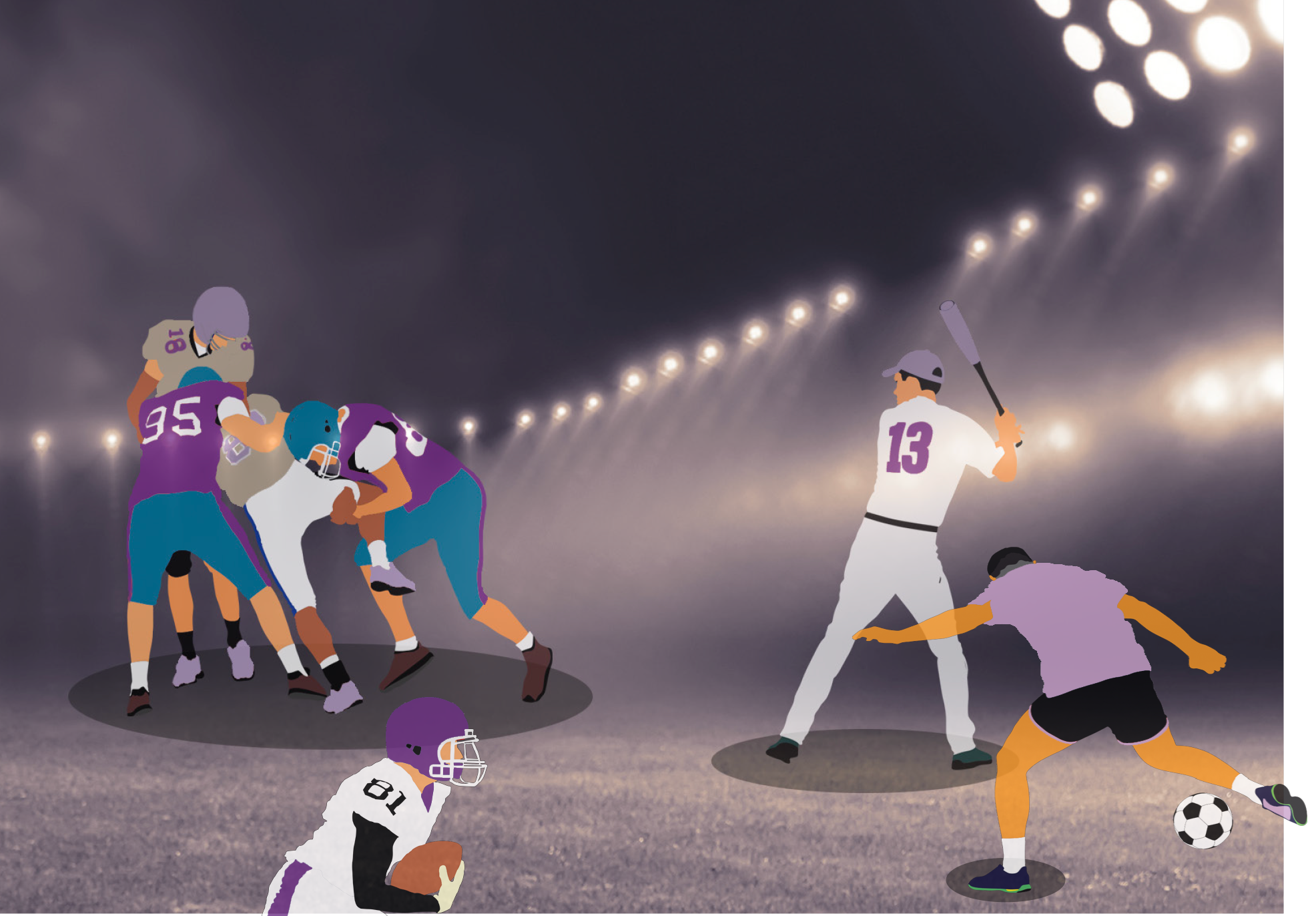
BIG IDEA #12: PLAY BALL
What role will sports play in our future? Dan Reiter, Vice President/General Manager of the Springfield Cardinals, predicts the road ahead.
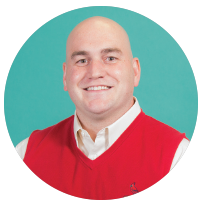 I think the future of sports is all about building facilities that are meant for both local public consumption and for recruitment so that we can host tournaments for people across the region, across the state and across the country. Those tournaments that come into town—they generate revenue. These are a major way we can bring people in to stay in hotel rooms, to eat at restaurants, to go shopping—I think the way that Springfield has been a medical hub, I really foresee Springfield having the potential to be a sports complex hub. It’s about innovation. Part of that innovation is figuring out how to not just be “a basketball town” and not just be “a football town,” but how to be a year-round destination. It’s about multipurpose. I think that this region knows the importance of hosting regional sports, and it’s going to have to happen with some really state-of-the-art complexes. And I think that’s something that you’ll see on the horizon. Otherwise, we’ll start losing instead of gaining, and that’s not what we want. I think that Springfield is proud to always be gaining and pushing forward.—By Dan Reiter as told to Savannah Waszczuk
I think the future of sports is all about building facilities that are meant for both local public consumption and for recruitment so that we can host tournaments for people across the region, across the state and across the country. Those tournaments that come into town—they generate revenue. These are a major way we can bring people in to stay in hotel rooms, to eat at restaurants, to go shopping—I think the way that Springfield has been a medical hub, I really foresee Springfield having the potential to be a sports complex hub. It’s about innovation. Part of that innovation is figuring out how to not just be “a basketball town” and not just be “a football town,” but how to be a year-round destination. It’s about multipurpose. I think that this region knows the importance of hosting regional sports, and it’s going to have to happen with some really state-of-the-art complexes. And I think that’s something that you’ll see on the horizon. Otherwise, we’ll start losing instead of gaining, and that’s not what we want. I think that Springfield is proud to always be gaining and pushing forward.—By Dan Reiter as told to Savannah Waszczuk
BIG IDEA #13: TRAILBLAZE
For Matt O’Reilly, a robust trail system and increased local food production are the keys to a healthy and happy future.
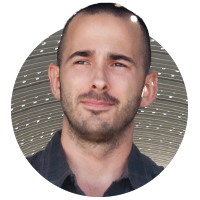 It should come as no surprise that when Matt O’Reilly dreams about the future of 417-land, he dreams about connecting the city with trails. That’s because he’s the mastermind behind Two Rivers Mountain Bike Park, a 400-acre park boasting 14.5 miles of bike trails.
It should come as no surprise that when Matt O’Reilly dreams about the future of 417-land, he dreams about connecting the city with trails. That’s because he’s the mastermind behind Two Rivers Mountain Bike Park, a 400-acre park boasting 14.5 miles of bike trails.
When explaining why he thinks trails are important, he quotes P. Martin Scott, “Bicycles are the indicator species of a healthy community, like shellfish in the bay.” Per O’Reilly, “healthy trails build healthy communities.” And you get a lot of bang for your buck.
O’Reilly argues that compared to other public projects cities could potentially invest in—like a park or recreation center—a trail system comparatively costs less and would see more use over time. It’s a low-cost investment with a high return.
Along with improving our trail system, O’Reilly would also like to see us increase our local food production. “Local food builds resilient local economy,” he says. “A strong local food system, by definition, would be nutritious for the consumer, the farmer and the planet.”
As he did with Two Rivers Mountain Bike Park, O’Reilly is putting his money where his mouth is. In 2013, he launched the Farmers Market of the Ozarks, which hosts dozens of local farmers every week. O’Reilly would like to see our region become known for technology-based and environmentally controlled food production. “Reinventing our food system is this country’s and the world’s next economic frontier,” he says.—By Vivian Wheeler
BIG IDEA #14: BUILD BUSINESS IN BRANSON
The key to Branson’s next chapter is taking the same friendly hand given to families on vacation and extending it to entrepreneurs.
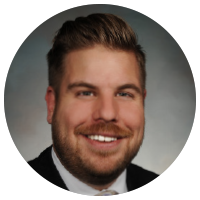 Welcome to Branson. The greeting appears as you approach city limits on Highway 65, but Jeff Seifried, president and CEO of the Branson Chamber of Commerce, thinks the phrase is much more than a road sign. When he envisions the future of Branson and southwest Missouri, he encourages striving for inclusiveness. “I think we’ve got to continue to focus on being the most welcoming community we can,” he says. “Making sure that our philosophies as a community are ones that embrace diversity and inclusion.” If Branson can make strides in inclusion, then it can become a top destination for families seeking entertainment and entrepreneurs seeking a successful business plan. Seifried already sees that for families. “We entertain families of all backgrounds and walks of life, and we do it in a very open and positive way,” he says. That can be contagious, and if the inclusivity spreads, then Seifried is confident Branson can reach his next goal. “I would predict that we will become the No. 1 place in the Midwest to live out your entrepreneurship dreams.”—By Rose Marthis
Welcome to Branson. The greeting appears as you approach city limits on Highway 65, but Jeff Seifried, president and CEO of the Branson Chamber of Commerce, thinks the phrase is much more than a road sign. When he envisions the future of Branson and southwest Missouri, he encourages striving for inclusiveness. “I think we’ve got to continue to focus on being the most welcoming community we can,” he says. “Making sure that our philosophies as a community are ones that embrace diversity and inclusion.” If Branson can make strides in inclusion, then it can become a top destination for families seeking entertainment and entrepreneurs seeking a successful business plan. Seifried already sees that for families. “We entertain families of all backgrounds and walks of life, and we do it in a very open and positive way,” he says. That can be contagious, and if the inclusivity spreads, then Seifried is confident Branson can reach his next goal. “I would predict that we will become the No. 1 place in the Midwest to live out your entrepreneurship dreams.”—By Rose Marthis
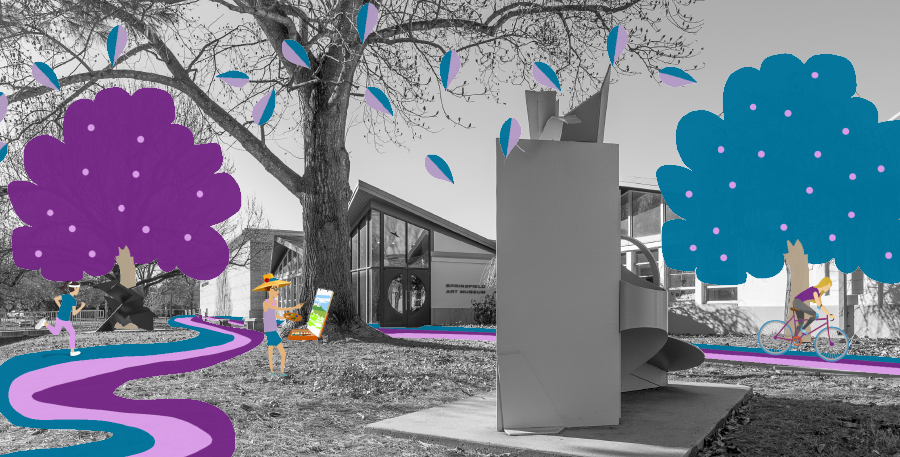
BIG IDEA #15: MAKE THE ARTS A DESTINATION
Springfield Art Museum Director Nick Nelson discusses the hopes, plans and dreams for our city’s 90-year-old museum.
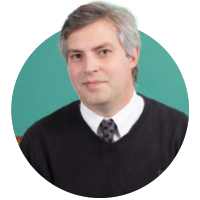 Ask a creative brain what they’d do with an unlimited budget and you never know what they’ll come up with. In describing his dream vision, Nick Nelson, Director of the Springfield Art Museum, hinted at plans that the Springfield Art Museum already has in the works. “We’re actually getting ready to go into some master planning for our building and grounds,” Nelson says.
Ask a creative brain what they’d do with an unlimited budget and you never know what they’ll come up with. In describing his dream vision, Nick Nelson, Director of the Springfield Art Museum, hinted at plans that the Springfield Art Museum already has in the works. “We’re actually getting ready to go into some master planning for our building and grounds,” Nelson says.
The thoughts are fresh on Nelson’s brain, as the museum is celebrating 90 years in 2018. “We’ve had a lot of conversations about what the next 90 years will look like,” he says. “We’d like if the museum could reshape its campus and its building to be more useful—to be a space that’s not useful by 1958 standards. Having a building and a campus that will feed the next 90 years and be relevant for future audiences is important.”
So, what does this look like? The interior will include more malleable spaces. “We need physical spaces that are more flexible and can be anything at any given time,” Nelson says. “Programmed classes are becoming less relevant at art museums due to technology. That means spaces within the museum need to be ready for what’s next. They need to be able to facilitate choice. Maybe they need to be used for a painting class in the morning, but then in the evening they’re used for a seated dinner.”
The exterior is a space the whole city should be excited about, too. “There are a lot of opportunities to create a destination that ties into other parts of the community through things like trails and other natural features,” Nelson says. “It would be so cool to create a type of Museum & Park District.” The museum’s location next to Phelps Grove Park and the Waterwise Garden could make this a reality. “We are also adjacent to a number of major pieces of transportation infrastructure including National Avenue, bus routes and The Link,” Nelson says. “We hope to capitalize on these resources and amenities to create a larger, more cohesive experience encompassing the museum campus and park and tie this Museum & Park District to other parts of the city through public transportation, trails and natural features like Fassnight Creek.” Exact plans aren’t set in stone yet, but the museum is adapting to fit the city’s needs. “It’s not just a pie-in-the-sky sort of dream,” Nelson says. “If there’s a city in 90 years, we’ll be a part of it.”—By Savannah Waszczuk
BIG IDEA #16: ANCHOR DOWNTOWN
Mayor Ken McClure sees a return to the concept of the city square as just the thing Springfield needs for a vibrant future.
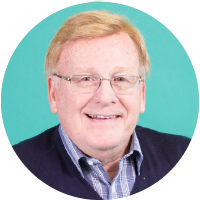 If you think your utility bill is high, talk with Springfield Mayor Ken McClure. Not long after moving into the mayor’s office last April, McClure was handed the city’s utility bill. It included a whopping $700 million in stormwater needs. But McClure is surprisingly optimistic. “We’re on the cutting edge of so many things,” he says. One of those bright spots is Springfield’s historic square. Once the central hub of the Queen City, the downtown grid was largely abandoned until the city, Missouri State University and business owners dedicated their efforts to its revitalization. After sitting vacant more than 20 years, lights at the historic Heer’s Building are back on. Lofts are occupied, shops are open, and just a handful of buildings have yet to be scooped up.
If you think your utility bill is high, talk with Springfield Mayor Ken McClure. Not long after moving into the mayor’s office last April, McClure was handed the city’s utility bill. It included a whopping $700 million in stormwater needs. But McClure is surprisingly optimistic. “We’re on the cutting edge of so many things,” he says. One of those bright spots is Springfield’s historic square. Once the central hub of the Queen City, the downtown grid was largely abandoned until the city, Missouri State University and business owners dedicated their efforts to its revitalization. After sitting vacant more than 20 years, lights at the historic Heer’s Building are back on. Lofts are occupied, shops are open, and just a handful of buildings have yet to be scooped up.
As McClure sees it, no space better represents Springfield’s enthusiasm for engaging, attracting and retaining business than the MSU IDEA Commons. MSU picked up the 88-acre strip of downtown for $1. “People at the time said the university overpaid,” McClure says. “But that started businesses coming in, and one thing led to another.” The once-blighted stretch of land is now home to the university’s Brick City, which houses the art and design programs, and the eFactory. “The IDEA Commons can provide an anchor for downtown,” McClure says. “It’s focused on business and business development. I think we have an opportunity to develop that area further, and we need the university, the city and private businesses to be part of that.”
So how does Springfield convince businesses to set up shop in our city limits? Easy. “Our low cost of living is key,” McClure says. “We have good workforce development programs and resources, including OTC, a strong public school system and a superb network of higher education institutions. This area has always been ideal for business, but it’s been under the radar.” Not anymore. The word is out.—By Ettie Berneking
BIG IDEA #17: LIGHTS, CAMERA, ACTION
What does the future hold for theatre in Springfield? According to Beth Domann, it should involve more parking, more engagement and more community support.
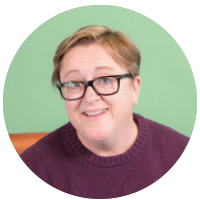 If you haven’t seen a production by Springfield Little Theatre, don’t tell Executive Director Beth Domann. “I meet people who have lived here 30 years and who have never been inside Landers Theatre,” she says. “If people could only realize what an incredible art scene we have here and what a freaky vortex of talent we have!”
If you haven’t seen a production by Springfield Little Theatre, don’t tell Executive Director Beth Domann. “I meet people who have lived here 30 years and who have never been inside Landers Theatre,” she says. “If people could only realize what an incredible art scene we have here and what a freaky vortex of talent we have!”
Stars including High School Musical’s Lucas Gabrielle and Apollo Robbins graduated out of Springfield Little Theatre, and star-powered Broadway names including Kim Crosby, Kathleen Turner and Betty Buckley took a turn in the Springfield spotlight.
It’s the wealth of talent, the impressive century-old building with its knockout acoustics and a dedicated cast that puts on more than 300 performances each year that make Domann more than optimistic about Springfield’s art scene. “It’s alive and thriving,” she says. “If money were no object, we’d go for world domination. But really, I’d just like to see everyone have their endowments filled so each theatre can be self-sustaining. That would be awesome possum.”—By Ettie Berneking
BIG IDEA #18: BIG CITY DREAMS
After more than 40 years in public service, Roseann Bentley has one request for the future of her hometown.
After 12 years as Greene County Commissioner and another eight as a state senator, Roseann Bentley has heard from residents who have wishes, demands and hopes for 417-land. Now that she’s retired, Bentley has wishes of her own. For starters, she’s set her sights on improving our transportation system. Reviving the downtown train depot and increasing the bus routes downtown are all high on her list. “Our transportation needs more help,” she says. “We’re growing pretty fast, and our transportation system hasn’t taken hold like I thought it would.” During her four decades of public service, Bentley focused on the county’s finances, she served on the Springfield school board and the Missouri State Board of Education and was the first woman from southwest Missouri elected to the Missouri Senate. After all those years, she’s pleased with how her hometown has grown, but growth comes at a cost. As Springfield’s population inches toward big-city status, Bentley worries our public transit isn’t keeping up. “It can’t get better unless we do something pretty bold,” she says. Springfield, one of your most vigilant supporters is keeping her eyes on you.—By Ettie Berneking
Reimagine The Square
We gave Dake Wells Architecture and Butler, Rosenbury & Partners an imaginary unlimited budget and asked them to reimagine the Springfield Square. Here’s what they came up with.
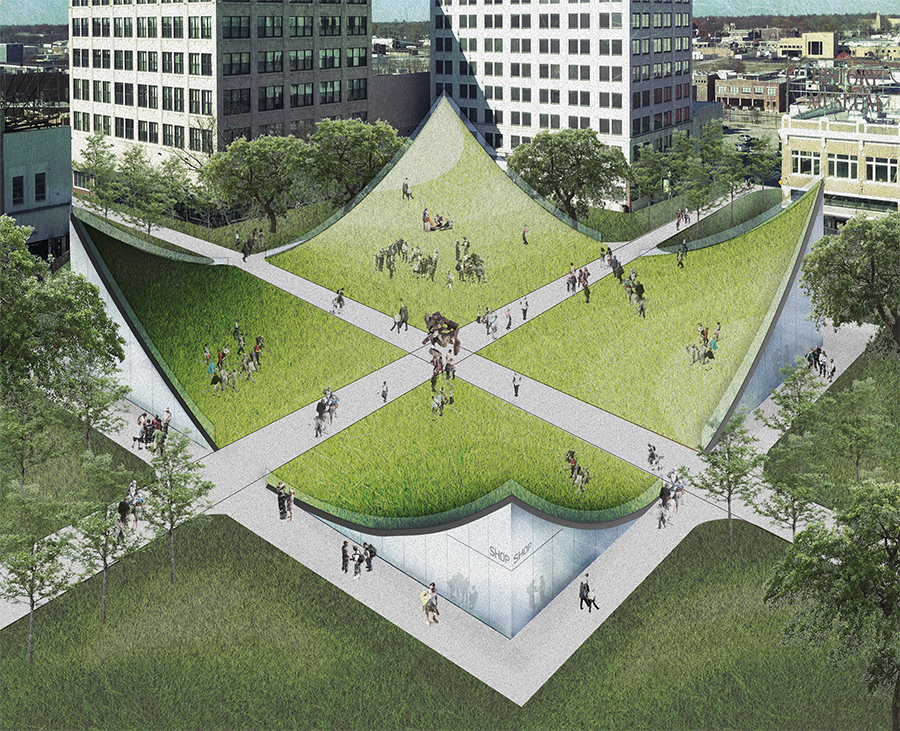
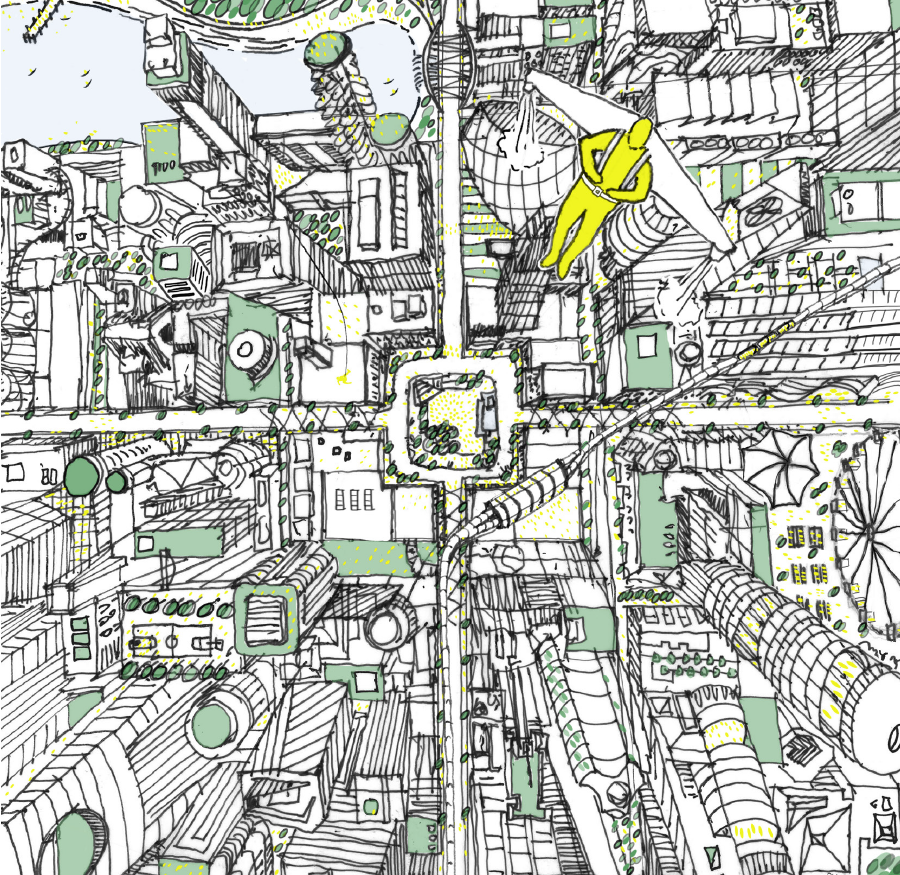
Game Changers
It’s fun to dream of the future, but we can’t forget our past. We talked to a few local history buffs to compile a list of game-changing moments of the past two decades.
1997: The Deconstruction of The Colonial Hotel
The Colonial Hotel at 205 S. Jefferson Ave. was torn down in November 1997 and was replaced by a university parking lot. “That hotel and all it meant to downtown—both as a building and as a center of so many things, as well as a pet project of one of the finest people ever to be involved with the city of Springfield, John T. Woodruff—it said a lot about what this part of the community was going through,” says John Sellars, Executive Director of the History Museum on the Square.
2005: Southwest Missouri State University Becomes Missouri State University
In 2005, 417-landers saw perhaps the most important name change to ever take place here: Southwest Missouri State University officially becomes Missouri State University. MSU President Clif Smart was quoted in a Springfield News-Leader article calling the name change the catalyst that changed the profile of the university, including helping it grow and diversify enrollment, expand academic offerings and increase private giving.
2005: The First Pitch at Hammons Field
April 2005 is a month that will never be forgotten by all the baseball lovers in 417-land—it’s when we were first able to call the Springfield Cardinals our very own team. April 2, 2005, is noted in the record books as the day of the Springfield Cardinals’ first exhibition game and also when Stan Musial threw out the first pitch. The team won its first Texas League Championship on September 15, 2012.
2016: Ozark Greenways celebrates 25 years
Although the Ozark Greenways officially started in 1991, what it has done for the city—and the growth it has experienced in recent years—has been a true game-changer for all outdoor lovers in 417-land. Thanks to Ozark Greenways, Springfield has a growing network of 72 miles of greenway trails and 81 miles of on-street routes.
2017: Wonders of Wildlife Opens
Johnny Morris’ Wonders of Wildlife National Museum & Aquarium opened its doors in September 2017 to encouraging early reviews. Could this “big thing” plaster Springfield on maps around the country? Here’s to hoping…
Developing a Vision
In early 2017, the Springfield Area Chamber of Commerce appointed 24 individuals to its private sector–led visioning committee. We chatted with appointed member Robin Robeson about the committee’s purpose.
When it’s time to start a new project, having the right vision is crucial. The Springfield Area Chamber of Commerce knows this, and that’s exactly why they appointed 24 community leaders and decision-makers to form a visioning committee for the city. These members were selected and appointed by the Chamber’s Board of Directors, and their main goal is to gather feedback and make recommendations for a clear, unifying and aligned vision for a growing and robust Springfield.
“What are the things that could help transform the community and shape our future?” asks Robin Robeson, who is a committee member and Executive Vice President/Chief Operating Officer at Guaranty Bank. These are the types of things the committee members discuss during meetings, which started in early 2017 and are held approximately once per month.
The committee has a list of Vision and Values Recommendations that helps it work toward all goals. The vision itself states that Springfield will be the most vibrant metropolitan area in Missouri where individuals, families and businesses thrive. The committee also developed a list of top five initiatives including Outdoors Everywhere; Economic Catalysts; Community Infrastructure; Workforce and Talent Pipeline; and Safe, Healthy and Welcoming Community, and their goal is to identify projects that go with these top five initiatives and seek feedback from the community. “Any project we do has to fall under one of three things,” Robeson says. “It has to be transformative, catalytic or game-changing. If it’s not any of those, it really won’t be a project that we undertake. These projects are big and transformative.”—By Savannah Waszczuk

Five Ways to Prepare Springfield’s Next Generation
As Superintendent of Springfield Public Schools, John Jungmann has some insight on how to prepare our students for the world ahead of them. His first tip: Listen to the students.
 1. We need to listen more to our students. Students’ ideas are always really interesting. They’re the future of our city, and this is going to be their community to either choose to stay in or leave, and we need them to choose to stay.
1. We need to listen more to our students. Students’ ideas are always really interesting. They’re the future of our city, and this is going to be their community to either choose to stay in or leave, and we need them to choose to stay.
2. We need more extra-curricular activities. We have assets here like the Wonders of Wildlife Museum and the lakes and rivers and a culture that embraces that outdoors. We need to multiply the impact of those resources. If our kids are more engaged in their school and their community, they’re going to be more likely to stay in Springfield and give back to the community.
3. I talk with our student advisory group a lot about what Springfield needs, and they often talk about needing a center for teenagers to gather and play and about making the city more walkable and bike friendly. We hear so much about this generation being disconnected, but what we hear from them so often is this need to be more connected.
4. One of the biggest priorities is to provide access to early childhood education to all. We have 2,000 kids who enter kindergarten each year. We capture around 600 of those kids in early childhood, but there are many others who aren’t getting access.
5. We have to spur that entrepreneurial spirit and move kids into spaces where they can learn what it means to start a business and make a product that solves a problem. Our GO CAPS program puts students in business environments like health care and startups. These are the people who will invest in the next generation of companies.—By John Jungmann as told to Ettie Berneking












